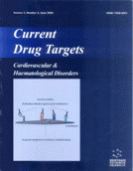Abstract
The existence of disintegrins, non-enzymatic, small molecular weight proteins from viper venom, has been known for 2 decades, and their impact on cellular research has been substantial and far-reaching. Disintegrins have been the molecular scaffold used in the design of therapeutics for the prevention of thrombosis and cancer. Their sequencing has provided insights into the evolution of proteins over millennia. Production of recombinant disintegrin mutants and fusion proteins has allowed investigations into molecular mechanisms at work in cell-extracellular matrix interactions. Structural homologies with non-snake proteins have shown disintegrin-like molecules in species ranging from slime mold to humans. Intracellular signaling events have been elucidated through the use of venom disintegrins, including events related to programmed cell death, motility, cell proliferation and viral pathogenesis. Disintegrin sequences (protein or genes) have been placed in microbubbles and liposomes and been found to target neovascular endothelium and metastatic tumors in two mouse models. The purpose of this review is to highlight the members of this disintegrin family discovered since 1998 as well as the increased understanding of their usefulness in therapeutics and technical assays.
Keywords: disintegrin, viper venom, angiogenesis, cell adhesion, extracellular matrix, integrin, molecular biology, cancer, intracellular signaling, recombinant proteins
 5
5













